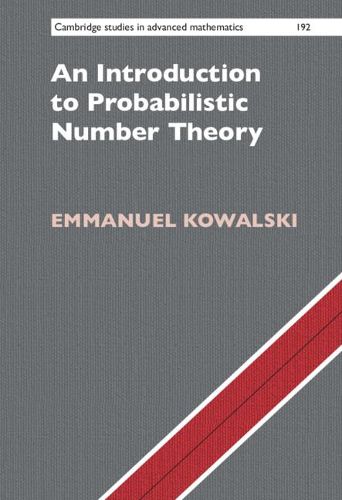Readings Newsletter
Become a Readings Member to make your shopping experience even easier.
Sign in or sign up for free!
You’re not far away from qualifying for FREE standard shipping within Australia
You’ve qualified for FREE standard shipping within Australia
The cart is loading…






Despite its seemingly deterministic nature, the study of whole numbers, especially prime numbers, has many interactions with probability theory, the theory of random processes and events. This surprising connection was first discovered around 1920, but in recent years the links have become much deeper and better understood. Aimed at beginning graduate students, this textbook is the first to explain some of the most modern parts of the story. Such topics include the Chebychev bias, universality of the Riemann zeta function, exponential sums and the bewitching shapes known as Kloosterman paths. Emphasis is given throughout to probabilistic ideas in the arguments, not just the final statements, and the focus is on key examples over technicalities. The book develops probabilistic number theory from scratch, with short appendices summarizing the most important background results from number theory, analysis and probability, making it a readable and incisive introduction to this beautiful area of mathematics.
$9.00 standard shipping within Australia
FREE standard shipping within Australia for orders over $100.00
Express & International shipping calculated at checkout
Despite its seemingly deterministic nature, the study of whole numbers, especially prime numbers, has many interactions with probability theory, the theory of random processes and events. This surprising connection was first discovered around 1920, but in recent years the links have become much deeper and better understood. Aimed at beginning graduate students, this textbook is the first to explain some of the most modern parts of the story. Such topics include the Chebychev bias, universality of the Riemann zeta function, exponential sums and the bewitching shapes known as Kloosterman paths. Emphasis is given throughout to probabilistic ideas in the arguments, not just the final statements, and the focus is on key examples over technicalities. The book develops probabilistic number theory from scratch, with short appendices summarizing the most important background results from number theory, analysis and probability, making it a readable and incisive introduction to this beautiful area of mathematics.